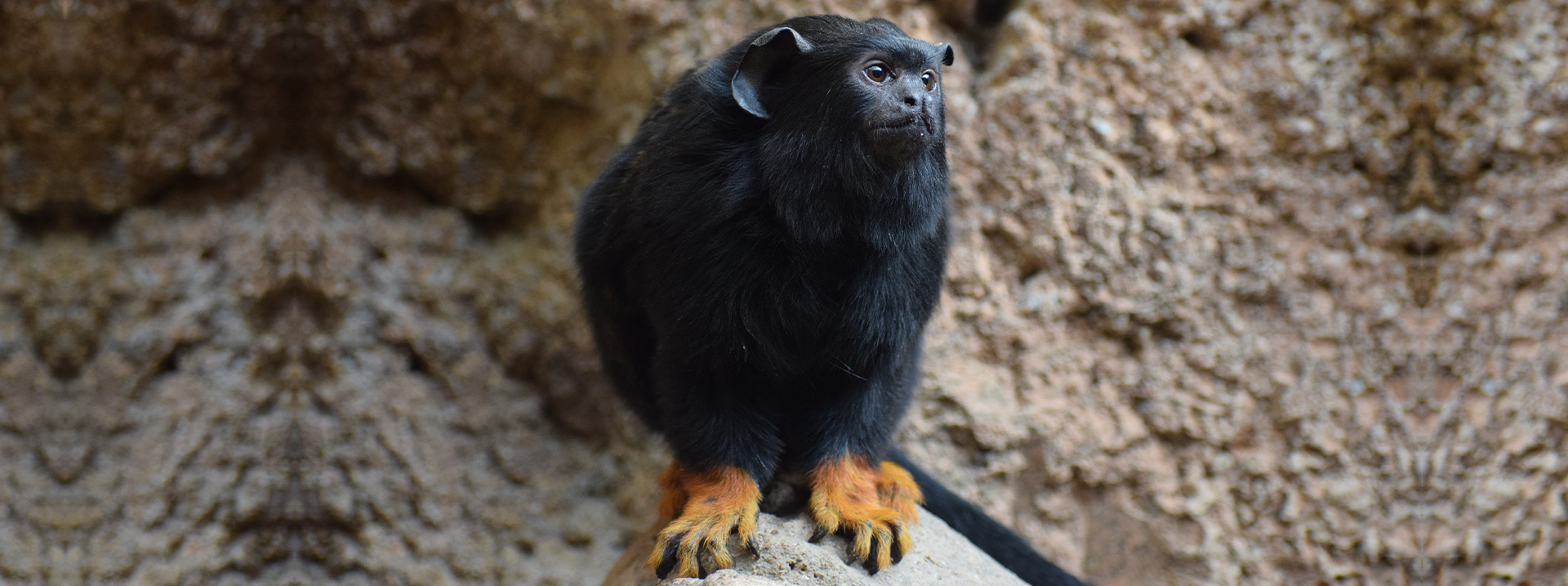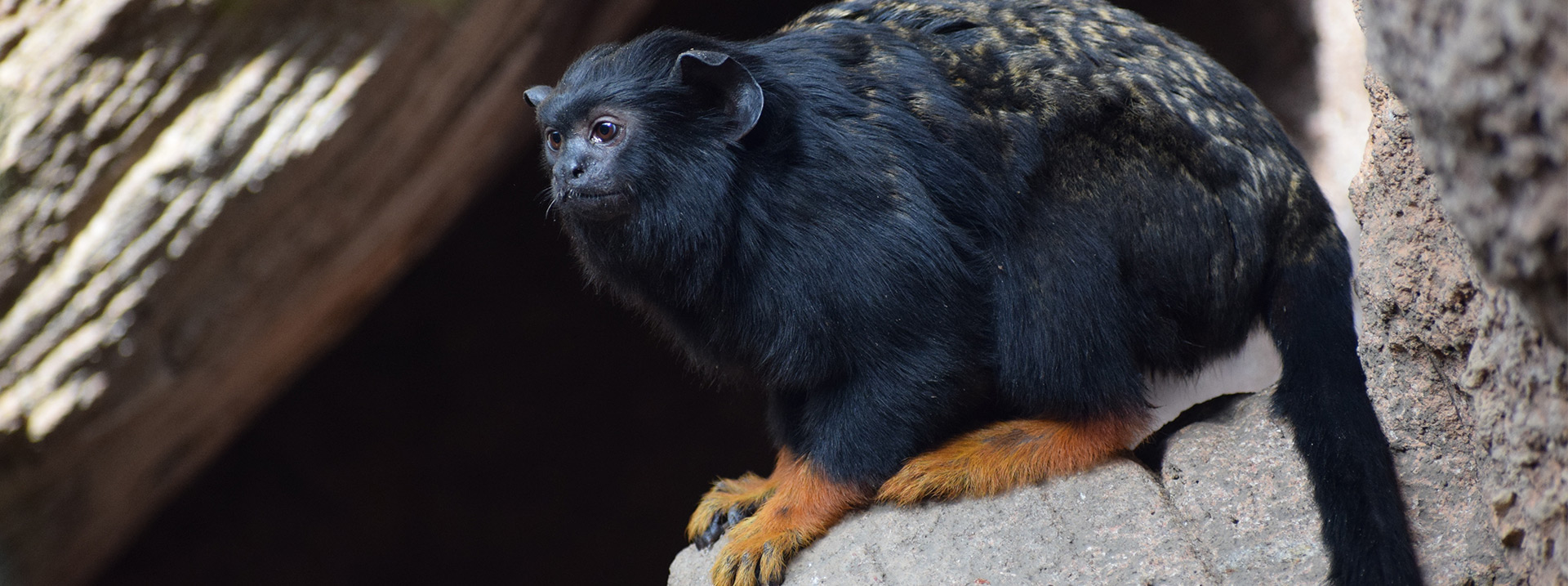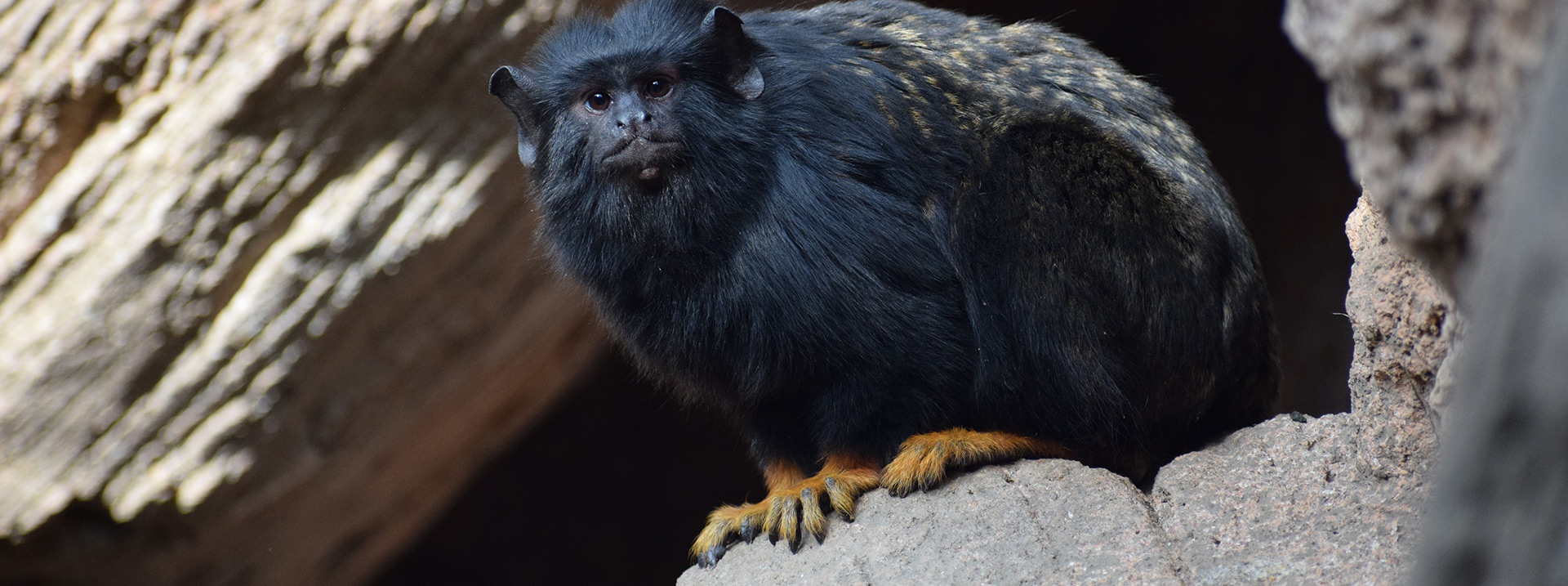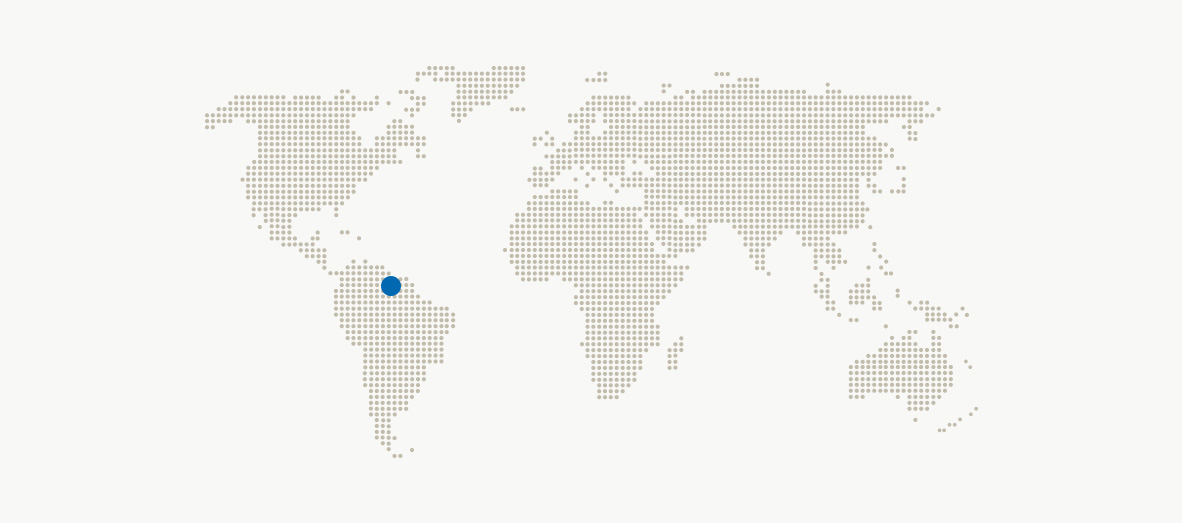



Golden-handed Tamarin
Saguinus midas
The golden-handed tamarin is a small primate from South America that usually lives in small groups. The peculiar coloring of its hands and feet characterize this tamarin species and give it its name. These animals are included in the European Endangered Species Program (EEP) for reproduction, under the European Association of Zoos and Aquaria (EAZA).
Species
Primates
Order
Mammalia
Family
Chordata
Danger of Extinction
Bajo riesgo (Preocupación menor)

Features
The golden-handed tamarin is a small primate from South America that weighs approximately 500g. It is characterized by the golden color of its hands and feet, which stand out against its dark fur. Its tail measures approximately 39 cm, it is not prehensile, and it is mostly used for balance.
This animal’s gestation period is between 140 and 170 days, and two babies are normally born, although sometimes they can have three. Only the dominant female has offspring; however, all the members of the group will help to take care of the babies.
Customs, food and habitat:
These animals inhabit the forests of Brazil, Guyana, French Guiana, and Suriname, occupying the tops of the trees, where they live in small family groups (4-6 individuals per group).
This is a diurnal species that spends much of its time in the trees; it likes to move about in the trees at approximately 10-20 meters of height. In terms of vocal communication, these animals use different, high-pitched sounds, some of which can hardly be heard by humans. They groom each other as a way to strengthen family ties.
As omnivores, these animals mainly eat fruits, vegetables, and insects. Nearly 50% of their diet is made up of insects.
Curiosities
It is said that this species scientific name was inspired by Greek mythology’s King Midas, who turned everything he touched into gold. This is because the golden color of these animals’ hands and feet can easily be related to King Midas.
The color of these animals’ hands and feet can range between yellow and orange, depending on the geographic region where they are located. Some authors consider this species to be divided into two subspecies.

